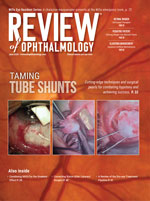 |
The Federal Trade Commission, the Department of Justice’s Antitrust Division and the U.S. Department of Health and Human Services have begun a cross-government public inquiry into “private-equity and other corporations’ increasing control over health care.”1 As part of the announcement, the government has opened a public comment period, where it’s invited people to notify them of their experiences with consolidation and/or private equity’s presence in medicine. The agencies are also interested in public comment regarding “transactions that would not be reported to the Justice Department or FTC for antitrust review under the Hart-Scott-Rodino Antitrust Improvements Act.”1
In an official statement, the joint task force notes, “Private equity firms and other corporate owners are increasingly involved in health-care system transactions, and, at times, those transactions may lead to a maximizing of profits at the expense of quality care. The cross-government inquiry seeks to understand how certain health care market transactions may increase consolidation and generate profits for firms while threatening patients’ health, workers’ safety, quality of care and affordable health care for patients and taxpayers.”1
The FTC Chair Lina Khan was quoted as saying, “When private equity firms buy out health-care facilities only to slash staffing and cut quality, patients lose out. Through this inquiry the FTC will continue scrutinizing private equity roll-ups, strip-and-flip tactics and other financial plays that can enrich executives but leave the American public worse off.”1
Jane Zhu, MD, a primary care physician and associate professor of medicine in the Division of General Internal Medicine at Oregon Health &
Science University, has co-authored several studies into health-care access and quality, and the effects of consolidation in health care. Her research includes ophthalmology practices purchased by private equity.
She and her group take an objective view and she says they just go “where the data leads,” but she’s also able to provide some perspective on why the government has chosen to target consolidation and private equity.
“Obviously, consolidation is happening everywhere, and it’s not just private equity driving this consolidation,” she says. “It’s insurers, large retailers and large hospitals and health systems. I need to stress that private equity is subset of that. It’s sometimes seen as ‘consolidation on steroids’ because they have so much capital, and their incentives are so precise. It’s not just PE that’s driving corporate consolidation.”
As to why there are theoretical concerns over private equity as a subset of corporate consolidation, Dr. Zhu says it has to do with the nature of the deals. “The unique part of private equity is they’re acting like house-flippers in health care in a way,” she says. “Unlike other corporate owners, private equity is buying up undervalued assets, keeping them for a very short period of time, and then selling them for a large profit. So, the incentives at play there are sort of heightened, and private equity’s duty to investors may fundamentally conflict with its duty to patients.”
The attraction of getting involved with a private equity firm if you’re an ophthalmology practice or other specialty practice relates to one of PE’s biggest positives: The infusion of capital.
“As physicians, we know that the practice environment is increasingly complex,” says Dr. Zhu. “It’s much harder to keep up with practice costs these days. There’s a lot of uncertainty around Medicare payments, reimbursement rates which haven’t kept up with the cost of inflation, and the costs of maintaining a practice. And, then you have the additional burdens of electronic health records, the need for billing and coding expertise, value-based payments, population health management, quality improvements and metrics; and performance measurements. All of those take time and money and it’s much harder for smaller, independent practices to engage in that. So private equity for a lot of practices may represent an infusion of capital, an infusion of institutional knowledge, and the ability to roll up as a bigger organization and take advantage of the benefits of size. So, you have better negotiating power with insurers and you can potentially get better rates because of that. You can have more market power to get higher volumes of patients and achieve standardization in care. All those things can be beneficial.
“But there are some perverse incentives that can arise from private equity investment,” Dr. Zhu contines. “That comes from the short timeline, and because a lot of these acquisitions are highly leveraged by debt. So, private equity is borrowing money to finance these acquisitions and that [debt] is then placed on the acquired company to pay back. What we’d expect from that are heightened incentives to make as much profit as possible, and a heightened incentive to pay this back as quickly as possible. What we end up seeing in the evidence are increased prices most consistently. And some studies suggest that there are changes in care delivery, both in terms of work-force composition, the types of services and the types of patients. There’s not a lot of strong evidence that quality is improved.”
Along those lines, Dr. Zhu cites a study of private equity in nursing homes. The study found that being in a private equity-owned nursing home increased the chance of death by 11 percent, either during your stay or for the 90-day period after discharge.2 “In the context of the health economics literature, this is a very large effect,” the authors noted.
“So, this empirical evidence and the news reports about Steward Health Care and the like have caught the attention of policymakers,” Dr. Zhu says. “Those are the loudest, most negative consequences that we can think of with this [PE] involvement and that’s what’s really captured regulators’ attention.”
For her part, Dr. Zhu points to a recent study she co-authored that looked at the effects of private equity ownership in ophthalmology, gastroenterology and dermatology practices. “Our study did find an increase in turnover in pre-acquired practices vs. independently owned controls,” she says. “We also saw an increase in the hiring of advanced practice providers [e.g., physician’s assistants]. So, there’s the possibility that there’s not only changes in the composition of the workforce, but also changes in the satisfaction and career trajectory for physicians.”3
Ultimately, Dr. Zhu thinks that, even if no concrete regulations come of this inquiry into consolidation, just the existence of the inquiry will have an impact. “The very fact that the FTC and DOJ are looking into this issue is having a chilling effect on private equity,” she says. “Through this assessment and gathering of public comments, they’re basically telling private equity that its activity is on notice and [the government] is paying attention. There’s a lot of ‘dry capital,’ and private equity is still very interested in health-care acquisitions. However, I think these legal and regulatory guardrails are going to have some downstream impacts.”
1. FTC statement. https://www.ftc.gov/news-events/news/press-releases/2024/03/federal-trade-commission-department-justice-department-health-human-services-launch-cross-government. Accessed May 20, 2024.
2. Gupta A, Howell ST, Yannelis C, Gupta A. NBER working paper series—Owner incentives and performance in health care: Private equity investment in nursing homes. [Online document]
https://www.nber.org/system/files/working_papers/w28474/w28474.pdf. Accessed May 20, 2024.
3. Bruch JD, Foot C, Sing Y, Song Z, Polsky D, Zhu JM. Workforce composition in private equity–Acquired versus non–private equity–acquired physician practices. Health Affairs 2023;42:1 [Online journal]. https://www.healthaffairs.org/doi/10.1377/hlthaff.2022.00308. Accessed May 20, 2024.
New OCTA Metric Could Predict Visual Field Loss
Although it’s not yet precise, a newer OCTA metric gives clinicians and researchers a glimpse of future functional progression in glaucoma patients.
Researchers believe that rapid initial optic nerve head capillary density loss may be used to assess the risk of glaucoma visual field progression. Their recent study, published in JAMA Ophthalmology, found that rapid initial optic nerve head capillary density loss from OCTA was associated with a faster rate of VF progression and a doubling of the risk of developing event progression. They believe that their method could potentially help identify patients who demonstrate a high risk for fast glaucoma progression, resulting in more severe functional impairment and potentially in blindness, which is paramount for optimizing management strategies.1
The retrospective study of a longitudinal cohort at a glaucoma referral center included 167 eyes (96 with primary open-angle glaucoma and 71 glaucoma suspects) of 109 patients (mean age: 69; 51.4 percent female) who were monitored for a mean of 5.7 years. The rates of initial capillary density and average retinal nerve fiber layer loss were calculated from the first three optic nerve head OCTA and OCT scans, respectively, during the initial follow-up (mean: two years). Based on the median rate, eyes were categorized into fast- and slow-progressor groups.
Early OCTA progression rate was found to be a slightly better predictor of future VF loss than early change rates in OCT RNFL or ganglion cell complex thickness.
Early OCTA progression rate was found to be a slightly better predictor of future VF loss than early change rates in OCT RNFL or ganglion cell complex thickness.
In this cohort, OCTA imaging showed 83 eyes to be slow progressors and 84 eyes to be fast, with mean capillary density loss of -0.45 percent per year and -1.17 percent per year, respectively (mean difference -0.72 percent/year). Similarly, 83 eyes were slow OCT progressors, while 84 eyes were fast, with mean retinal nerve fiber layer thinning of -0.09 µm per year and -0.60 µm per year, respectively (mean difference -0.51 µm/year).
The fast OCTA and OCT progressors were associated with more rapid visual field loss (mean difference -0.18 dB/year and -0.17 dB/year, respectively). Fast OCTA progressing eyes were more likely to have visual field progression (hazard ratio: 1.96). Also, 17 of 52 eyes (32.7 percent with fast OCTA and OCT progression developed subsequent visual field likely progression.
“Both trend and event analysis findings support the consideration of potential clinical use of OCTA along with OCT for estimating the risk of glaucoma progression,” the researchers wrote in their paper.
The team did note that their results were from the initial three OCT or OCTA visits instead of relying solely on one baseline test. “Although opting for more frequent testing may increase the predictability of visual field progression, such a testing paradigm may not be feasible in clinical practice,” they added.1
A commentary for the study also published in JAMA Ophthalmology highlighted that the fact that the findings were “synergistic with faster structural change in predicting faster future VF loss makes early OCTA rate of change an important new biomarker of future VF progression.”2
The authors observed that “OCTA may be useful in measuring change in eyes in which OCT has already reached the floor effect. Objectively and quantitatively identifying and predicting change in such eyes with advanced glaucoma could have great value.”
Still, the commentary emphasized that the study was unable to assess the relative benefit of OCTA in advanced glaucoma, as the participants in this study had relatively mild damage; only 28 eyes with moderate to severe disease were included.
“It would be valuable in future work to understand the spatial association of RNFL thinning and decreasing ONH capillary density with the corresponding areas of future VF change,” the commentary authors wrote. “Novel parameters and further applications of OCT technology will allow clinicians to quantitatively identify and appropriately intervene for fast progressors who are at increased risk of visual loss and blindness.”2
1. Tansuebchuesai N, Nishida T, Moghimi S, et al. Rate of initial optic nerve head capillary density loss and risk of visual field progression. JAMA Ophthalmol. May 2, 2024. [Epub ahead of print].
2. Schuman JS, Desai A, Lavinsky F. Optical coherence tomography angiography to predict visual field loss. JAMA Ophthalmol. May 2, 2024. [Epub ahead of print].




